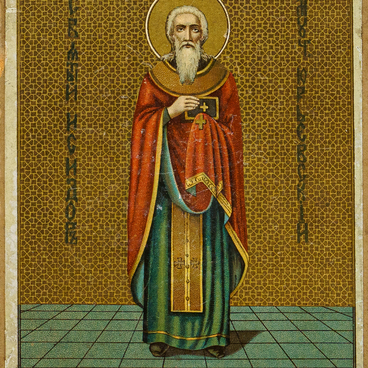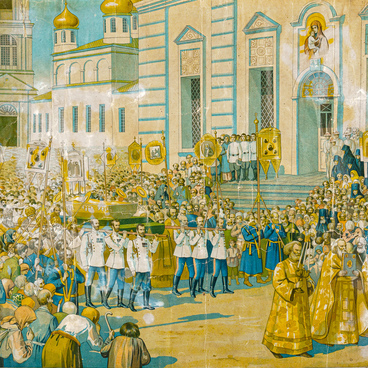Such paper-based icons were widely used among the pilgrims of the monastery. They were ordered and distributed in large quantities by the monastery’s souvenir shop. Small, printed icons were popular across all classes of Russian society. Typically, small icons depicted saints.
In this case, the image of the Virgin of the Passion is depicted. The troubled posture of the Infant shows the “vulnerability” of Christ and His connection to human nature. This vividly conveys one of the key themes of Christianity regarding the fullness of human nature inherent in the incarnate Christ.
The icon of the Virgin of the Passion belongs to the type of icons known as “Hodegetria.” The Virgin of the Passion became renowned in the Nizhny Novgorod Region during the reign of Tsar Mikhail Fyodorovich.
There is a well-known account of a miraculous healing before the icon. A pious woman named Yekaterina, after getting married, began to suffer from fits of demonic possession and even attempted suicide. In moments when she could control herself, Yekaterina prayed to the Virgin Mary for healing. Her prayer was heard, but she did not immediately fulfill her promise. Remembering it later, she fell ill with fear that she had not kept her vow to God. Then, in a dream, the Virgin Mary appeared to her. She instructed the woman to go to Nizhny Novgorod and pray before the icon painted by the iconographer Grigory, which depicted the instruments of the Passion, and to give him seven silver coins collected as alms in the name of the Virgin Mary for the decoration of the icon. Yekaterina followed the instructions and received healing; thereafter, the tradition reports numerous miracles attributed to the icon.
A local landowner, Prince Boris Lykov, upon learning of the miraculous icon, transferred it to his church in the village of Palets.
In 1641, by the order of Tsar Mikhail Fyodorovich, the icon was moved from the village of Palets to Moscow. At the site of its ceremonial reception by the tsar at the Tver Gate, a stone church was initially built, and in 1654, Alexei Mikhailovich ordered the construction of the Passion Convent. The icon remained there until 1919, when the monastery was abolished and desecrated.
The icon was then transferred
to the Church of the Resurrection of Christ in Sokolniki, where it is currently
located.




